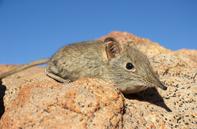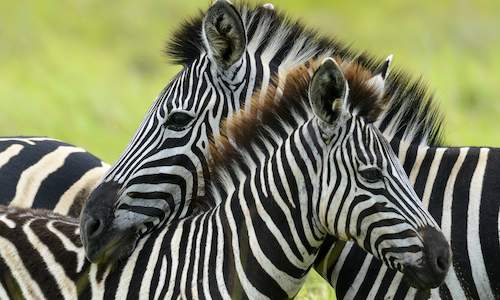
Name
Eastern rock elephant shrew or Eastern rock sengi (elephantulus myurus)Appearance
Eastern rock elephant shrews have a body measuring about 260 mm and a tail that is longer than its head and body length. This animal weighs only 60 grams. Its eyes are distinctly circled in white, and its tail is less hairy in comparison to the that of the Smith’s rock elephant shrew.Diet
The eastern rock elephant shrew eats small insects such as ants and termites. It spends its days under cover and shade, and moves from these spaces to catch its prey.Eastern Rock Elephant Shrew Breeding
After eight weeks of gestation, this animal usually gives birth to two sets of twins from September to March, during the rainy summer months. Females can carry several litters in their lifespan. At birth, the young are well developed, fully haired with open eyes, and able to walk soon after. The young are sexually mature at five to six weeks of age.Behaviour
The eastern rock elephant is mainly diurnal but occasionally operates during twilight hours or at bright moonlit nights in South Africa. They are solitary animals but are sometimes seen in pairs, most likely for mating. They are very nimble, quick and sure-footed moving on the uneven terrain of their habitats.
When alarmed they alert others by loudly drumming their feet and making a series of high pitched squeaks which fade to become a barely audible sound. In making this sound, it holds its head high and curves its long snout over the muzzle. They also communicate through scent, secreted by scent glands at the corners of the mouth, behind the ears and at the base of the tail.
 Learning about the mammals of South Africa is now so much easier for all South Africans - SouthAfrica.co.za is an excellent source of inform...
Learning about the mammals of South Africa is now so much easier for all South Africans - SouthAfrica.co.za is an excellent source of inform...